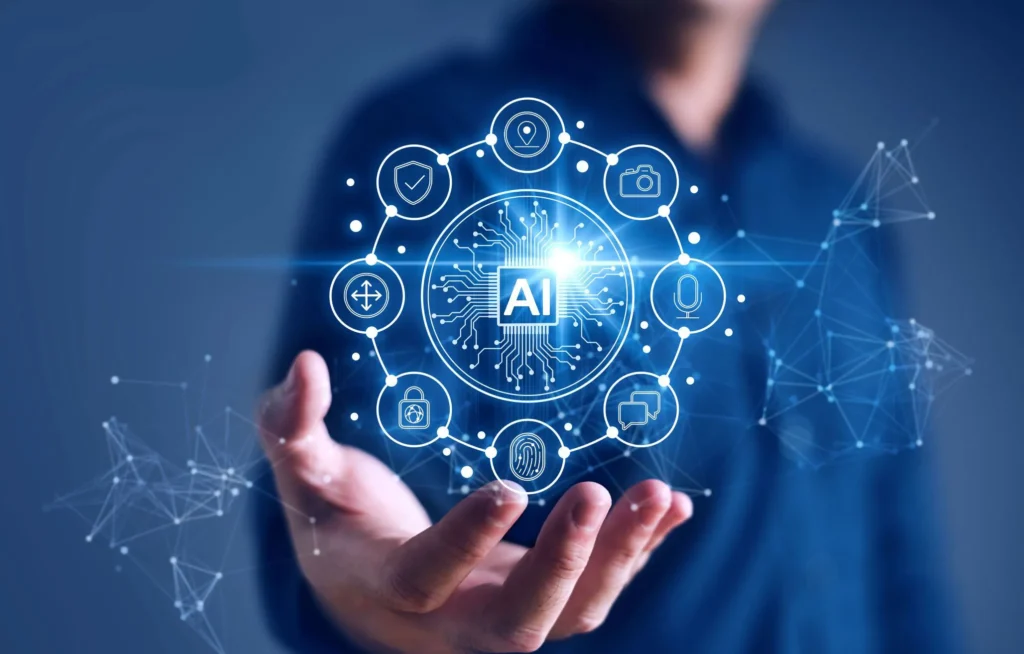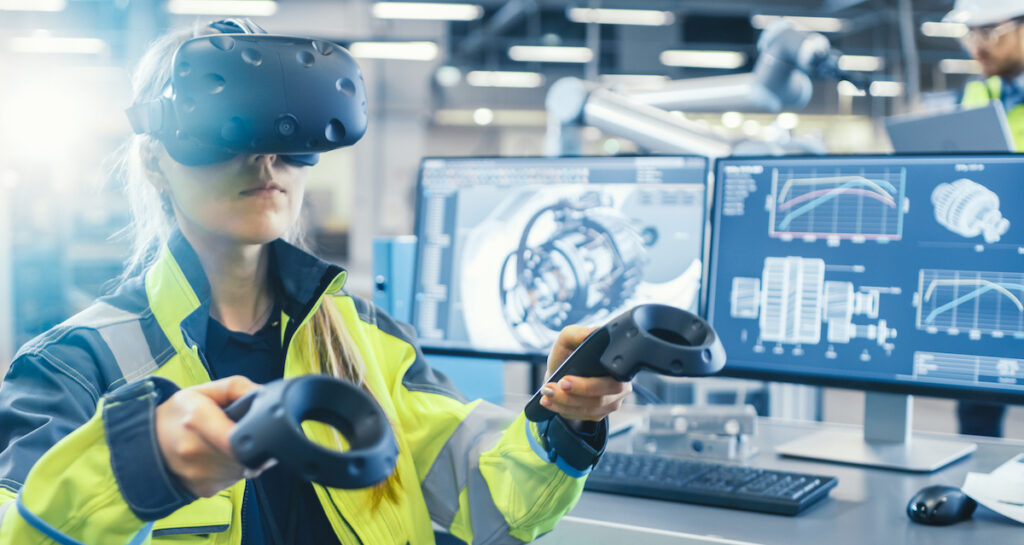The construction industry is rapidly evolving with the integration of advanced technologies like Artificial Intelligence (AI), Virtual Reality (VR), and Machine Learning (ML). These technologies are transforming how construction projects are designed, managed, and executed. One of the key areas benefiting from this transformation is the identification and management of project deficiencies, flaws, defects, or issues that may arise during the design, construction, or post-construction phases. Below is an exploration of how AI, VR, and ML are being leveraged to find and mitigate deficiencies in construction projects.
Artificial Intelligence (AI) in Construction Deficiency Detection
AI plays a critical role in automating the identification of deficiencies in construction projects. By analyzing massive amounts of data generated during the construction process, AI can detect potential issues that would otherwise go unnoticed.
- Data-Driven Inspections: AI-powered tools can analyze data from drones, cameras, and sensors placed on-site to perform real-time inspections. AI can scan construction elements such as walls, foundations, or structural components, looking for anomalies that may indicate flaws or deficiencies. These can include cracks, deformations, or incorrect installations that would lead to future problems if left unaddressed.
- Predictive Analytics: AI systems are capable of analyzing historical data from similar projects to predict where deficiencies are most likely to occur. This helps project managers anticipate and address issues before they escalate into costly rework or delays. For example, AI can identify patterns of material failure or workmanship defects that typically occur under certain environmental conditions or project parameters.
- Automated Quality Control: AI can be integrated with Building Information Modeling (BIM) systems to automatically compare the construction progress with the project’s digital twin. Discrepancies between the planned model and the actual build can be flagged as potential deficiencies. This automation streamlines quality control processes, reducing the reliance on manual inspections.
Virtual Reality (VR) for Immersive Deficiency Identification
VR provides a highly immersive environment for construction stakeholders to identify and address project deficiencies in a virtual space, long before they manifest in the physical world.
- Virtual Walkthroughs: VR allows project managers, architects, and engineers to perform virtual walkthroughs of the construction site or completed designs. This enables them to visually inspect every aspect of the project in detail. Since the environment is interactive, they can closely examine the design and construction elements for any signs of errors, incomplete installations, or design misalignments.
- Remote Collaboration: With VR, teams can collaborate in real time, regardless of their physical location. Engineers, architects, and inspectors can virtually meet on a 3D model of the project to discuss potential deficiencies, mark problem areas, and suggest corrective measures without having to be on-site. This reduces travel time and allows for quicker identification and resolution of issues.
- Simulating Construction Scenarios: VR can simulate various construction stages and stress-test them under different conditions, such as weather events or load-bearing scenarios. Deficiencies that might emerge due to these variables can be identified in the virtual environment and resolved before construction reaches critical stages. These proactive measures help prevent costly delays and rework.
Machine Learning (ML) for Continuous Improvement in Deficiency Detection
Machine Learning (ML) enhances the deficiency detection process by continuously improving algorithms over time. ML models can be trained to recognize patterns and anomalies within construction data sets, making future predictions more accurate.
- Anomaly Detection in Real-Time: ML algorithms can analyze real-time data streams from IoT devices, sensors, and drones on construction sites. These algorithms are designed to detect deviations from expected performance or construction outcomes. For instance, if a sensor detects an unusual change in the structural integrity of a building component, ML algorithms can quickly flag it as a potential deficiency.
- Image and Video Analysis: ML is highly effective in analyzing visual data from cameras and drones used in construction monitoring. Through techniques like computer vision, ML models can be trained to recognize visual cues that indicate deficiencies such as cracks, leaks, or material degradation. Over time, these models improve in accuracy, reducing the chances of missed issues during inspections.
- Continuous Learning and Adaptation: The advantage of ML in construction is its ability to learn from each project it is applied to. By analyzing data from past projects, ML models adapt and become better at detecting similar deficiencies in future projects. For example, if a particular construction technique frequently leads to deficiencies in one type of building, ML will prioritize its inspection on that area for future projects using similar techniques.
- Deficiency Classification and Prioritization: ML can classify deficiencies based on severity and urgency, helping project teams focus on the most critical issues first. By analyzing historical data on the impact of certain deficiencies, ML can predict the cost, time, and safety implications of leaving a problem unresolved.
The Future of Deficiency Detection with AI, VR, and ML
The use of AI, VR, and ML in construction deficiency detection is still evolving, but the potential benefits are vast. As these technologies continue to develop and integrate, construction professionals can expect to see:
- Reduced Rework and Delays: Automated detection and resolution will minimize the need for rework, which is one of the leading causes of delays and budget overruns in construction.
- Improved Safety: Early identification of structural or material deficiencies will enhance the safety of construction sites and completed projects.
- Enhanced Collaboration: VR and AI will make it easier for teams to collaborate, regardless of their location, improving the decision-making process.
- Cost Efficiency: By catching deficiencies early and automating many aspects of inspection and quality control, AI and ML can lead to significant cost savings across the project lifecycle.
The convergence of AI, VR, and ML in construction is revolutionizing the industry’s approach to quality control, driving higher efficiency, accuracy, and safety in identifying and mitigating deficiencies. As these technologies become more widely adopted, their impact on the construction process will be transformative. By leveraging AI, VR, and ML, construction teams can detect and address deficiencies more efficiently and cost-effectively, ultimately delivering higher-quality projects that meet or exceed stakeholder expectations.
Oracle leverages the technologies of AI, VR and ML to enhance construction project management through its various platforms, including Oracle Aconex, Oracle Construction Intelligence Cloud (CIC) Analytics and Oracle Primavera Cloud (OPC). These technologies, integrated within Oracle’s Construction Management Platform, are transforming how projects are planned, managed, and executed by enhancing decision-making, improving safety, and increasing efficiency.
Oracle Aconex: Integrates with AI and ML tools to automate document control, track correspondence, and provide insights into project performance.
Oracle Construction Intelligence Cloud (CIC) Analytics: Employs AI and ML to provide predictive analytics, enabling project teams to anticipate risks, manage resources efficiently, and make data-driven decisions.
Oracle Primavera Cloud (OPC): Integrates with VR platforms to support immersive design reviews, enhance stakeholder collaboration, and facilitate virtual project walkthroughs.
D.R. McNatty & Associates, Inc. (DRMcNatty) provides expert consulting and technology services to help clients integrate emerging technologies such as AI, VR and ML into their Oracle Primavera Suite of tools. With deep expertise in project management solutions, DRMcNatty assists organizations in leveraging AI driven predictive analytics, VR for immersive project visualization, and ML for enhanced resource management and decision-making. Our team works closely with clients to customize and optimize these technologies within Oracle Primavera Cloud (OPC), Oracle Primavera Unifier, Oracle Primavera P6 EPPM and Oracle Aconex, enabling smarter, more efficient project execution while driving innovation and long-term success.








